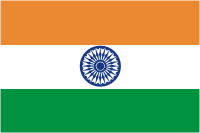
 Rangoli is a Hindi word for making temporary patterns on the ground with white or colored powder. It is process that is exclusively reserved for women in India, and Kendriya Vidyalaya Tirumalagiri recently had a Rangoli competition as part of its CCA activities (cultural preservation). Although in appearance it might look like some colored chalk sidewalk art you might see at a crowded urban getaway like Battery or Central Park in NYC or perhaps at Faneuil Hall in Boston, it's different in many respects.
Rangoli is a Hindi word for making temporary patterns on the ground with white or colored powder. It is process that is exclusively reserved for women in India, and Kendriya Vidyalaya Tirumalagiri recently had a Rangoli competition as part of its CCA activities (cultural preservation). Although in appearance it might look like some colored chalk sidewalk art you might see at a crowded urban getaway like Battery or Central Park in NYC or perhaps at Faneuil Hall in Boston, it's different in many respects. 
 The Telagu word for this type of design is "Muggoo" - which is actually done daily in the morning as a sign of cleanliness. It shows that the house has been cleaned and in some ways publically reflects on its occupants. Usually done in only white powder on the sidewalk or street, it is usually barely still noticeable by evening time. I'd like to do more on the local Muggoo in the coming weeks - because it's really cool.
The Telagu word for this type of design is "Muggoo" - which is actually done daily in the morning as a sign of cleanliness. It shows that the house has been cleaned and in some ways publically reflects on its occupants. Usually done in only white powder on the sidewalk or street, it is usually barely still noticeable by evening time. I'd like to do more on the local Muggoo in the coming weeks - because it's really cool.
Both Muggoo and Rangoli are creative in their own rights, but the interesting thing is that there seem to be a few set patterns that most of the designs will follow. There is usually a series of dots arranged in a matrix through which a curved and unbroken decorative line will be woven. The pattern is usually symmetrical and is very beautiful. Although I can not say with 100% certainty, I am fairly convinced that the patterns are traditional and offer some underlying meaning or just simply an aesthetic connection to the past.





1 comment:
Hi Patrick, so we won, woohoo. Cowboy up, and all that. The Evil Empah lies in rubble. I don't have a TV at home and had to "watch" the World Series on the internet. Bummer...
A little bit about rangoli/muggu... There's a slight difference between the two, in that rangoli literally has the word "colour" (rang) in it, and is a relatively north Indian art form (I don't remember seeing very much of it at all growing up in the south).
muggu/kolam is the thing in pure white on bare earth that you see more often in the south. One very nice aspect (which I only found out relatively recently) is that kosher muggus are drawn with rice flour. Part of the intent is so that birds and critters can get something to eat, and they're invited to be part of our lives, a kind of harmonious co-existence thing, acknowledging that they exist and are important. More on Wikipedia, where else?
Of course, they've been using chalk ever since I can remember, so the original intent is lost (as is the case in many of these cultural thingumabobs). Wonder what the birds and the bees have to say about that!
Post a Comment